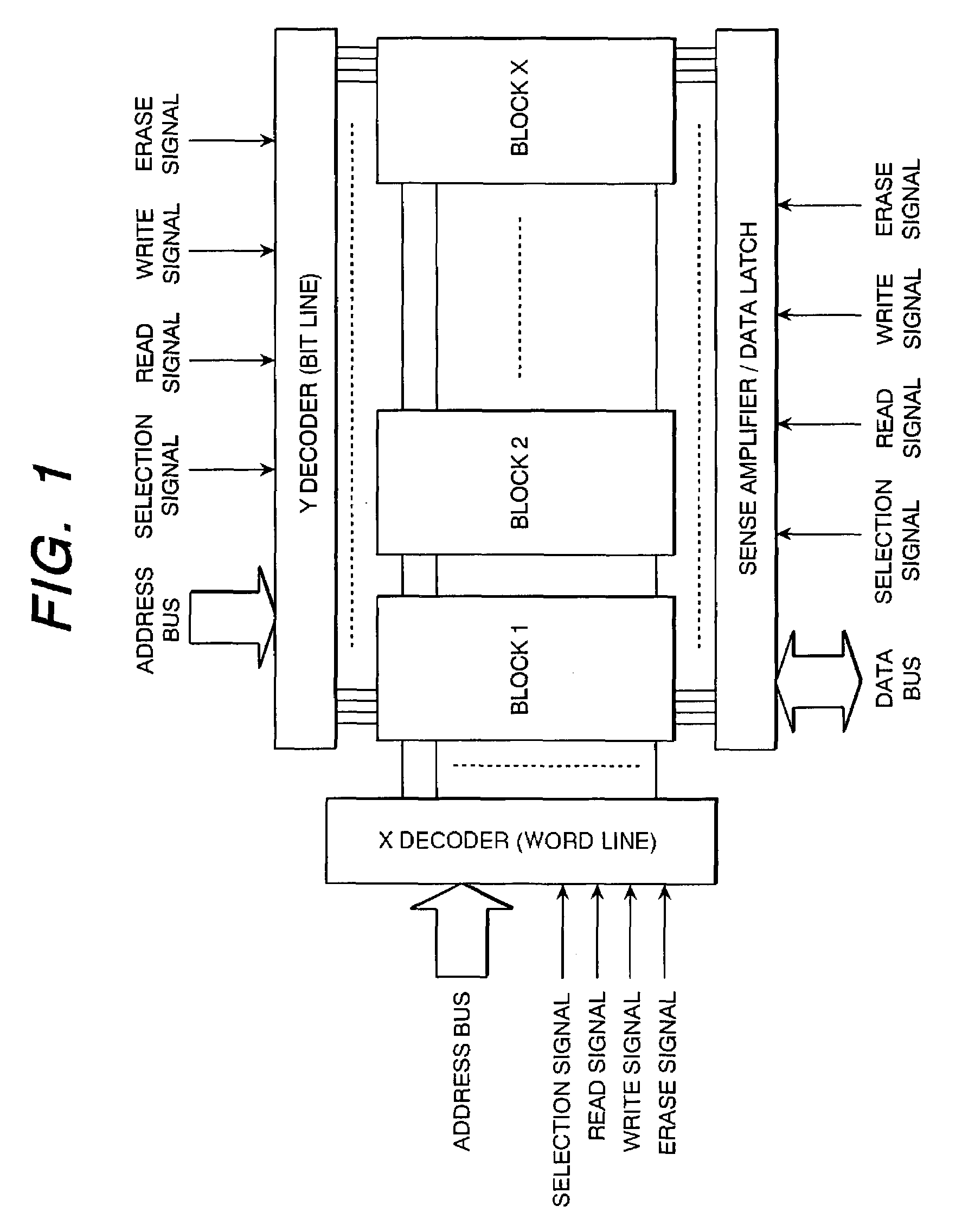Non-volatile semiconductor memory array and method of reading the same memory array
- Summary
- Abstract
- Description
- Claims
- Application Information
AI Technical Summary
Benefits of technology
Problems solved by technology
Method used
Image
Examples
Embodiment Construction
[0028]The like elements are designated with the like reference numerals throughout the drawings of embodiments.
[0029]A semiconductor memory array block of the first embodiment of the present invention is illustrated in FIG. 8. As can be understood from the prior art of FIG. 2, reference memories are allocated within a block. According to an example of FIG. 8, a DM0 reference memory allocated in the most significant bit of an X decoder is simultaneously reprogrammed or erased whenever the memory in the block is reprogrammed or erased. In order to reprogram and erase the relevant reference memory as explained above, the word line exclusive for the reference memory, reference memory transistor gate control line, reference memory bit line and reference memory source line are controlled. Thereby, the reference memory DM0 is always set to erase “1” state.
[0030]This profile will be explained with the status transition diagrams of FIG. 9 (a) and FIG. 9 (b). In FIG. 9 (a), a memory is shifte...
PUM
 Login to View More
Login to View More Abstract
Description
Claims
Application Information
 Login to View More
Login to View More - R&D
- Intellectual Property
- Life Sciences
- Materials
- Tech Scout
- Unparalleled Data Quality
- Higher Quality Content
- 60% Fewer Hallucinations
Browse by: Latest US Patents, China's latest patents, Technical Efficacy Thesaurus, Application Domain, Technology Topic, Popular Technical Reports.
© 2025 PatSnap. All rights reserved.Legal|Privacy policy|Modern Slavery Act Transparency Statement|Sitemap|About US| Contact US: help@patsnap.com



